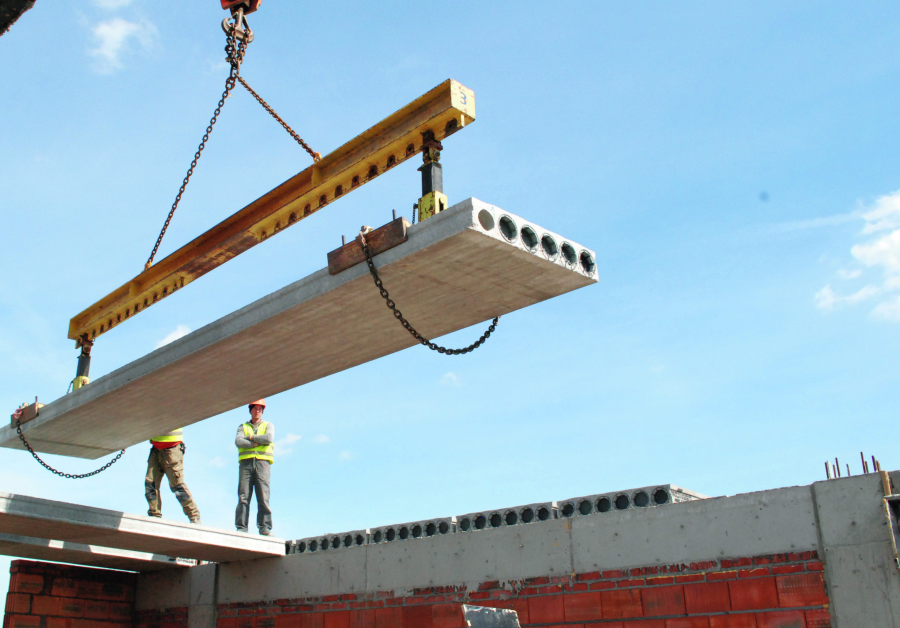 The most characteristic varieties of dense-ribbed ceilings:
The most characteristic varieties of dense-ribbed ceilings:
• Ceiling made of Akerman-type ceramic hollow bricks – Ceiling without prefabricated beams, wykonywany z pustaków ceramicznych układanych na szalunku ułożonym … read on
 The most characteristic varieties of dense-ribbed ceilings:
The most characteristic varieties of dense-ribbed ceilings:
• Ceiling made of Akerman-type ceramic hollow bricks – Ceiling without prefabricated beams, wykonywany z pustaków ceramicznych układanych na szalunku ułożonym … read on
 Hollow-core slabs are prefabricated slabs with holes – channels, along the cross-section (so-called. Żerań plates). The holes reduce the weight of the plate . The thickness of the plates is 24 Cm, hole diameter – 19,4 … read on
Hollow-core slabs are prefabricated slabs with holes – channels, along the cross-section (so-called. Żerań plates). The holes reduce the weight of the plate . The thickness of the plates is 24 Cm, hole diameter – 19,4 … read on
 The basic function of the ceiling is to transfer the load to the walls, and through them on the foundations of the building. Ceilings carry their own weight, payloads and partition wall loads. Stiffen the walls of the building, separate from … read on
The basic function of the ceiling is to transfer the load to the walls, and through them on the foundations of the building. Ceilings carry their own weight, payloads and partition wall loads. Stiffen the walls of the building, separate from … read on
 Tangible heat magazines. This type of thermal energy storage is still the most common. The heat is stored in materials with a high heat capacity, which is related to their specific mass and … read on
Tangible heat magazines. This type of thermal energy storage is still the most common. The heat is stored in materials with a high heat capacity, which is related to their specific mass and … read on

The southern wall undergoes the greatest changes in houses using passive systems to obtain thermal energy. All elements of the building structure located on the south side, are shaped in such a way, in addition to traditional functions … read on

The problem of thermal energy storage is as important as the problem of solar radiation absorption. Globally, the amount of solar energy falling on the surface of a single-family house during the year is sufficient to meet the related needs … read on

All external elements of the usable housing of the passive building volume still perform the same functions as in traditional houses, but their role has been extended to new tasks resulting from the need to obtain energy … read on
Protecting the building against prevailing winds also reduces heat loss, sometimes even 10%. This can be done in many ways: Vegetation, permanent partitions, shape of buildings, or the right terrain.
Conifers … read on
Houses that use solar radiation for heating purposes are also energy-saving buildings, therefore, the analysis of the impact of passive systems carried out in this chapter will also relate to energy-efficient ways of building and … read on

For passive systems, "heavy" and "light heavy" building methods are preferred, because such buildings heat up slower, they keep heat longer without large temperature fluctuations and there is no overheating in them, thanks … read on